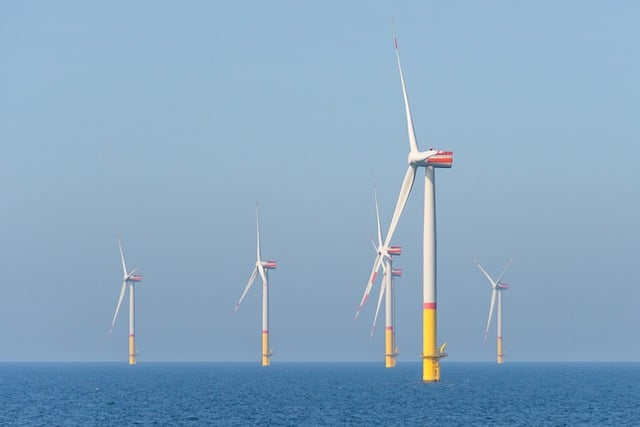In a world where climate change, resource scarcity, and environmental degradation pose unprecedented challenges, the concept of an eco school has emerged as a beacon of hope. These institutions are not merely places of learning; they are living laboratories where students, teachers, and staff collaborate to reduce ecological footprints, harness green technologies, and model carbon‑neutral practices. The transformation from a conventional school to an eco school requires a holistic vision that integrates architecture, energy systems, curriculum, and community engagement. This article explores how an eco school can lead sustainable development through thoughtful design, renewable energy deployment, waste minimization, and ongoing performance monitoring.
Foundations of an Eco School
The first step toward becoming a carbon‑neutral campus is establishing a clear mission that aligns educational objectives with environmental stewardship. This mission statement should guide every decision, from procurement policies to extracurricular activities. An eco school adopts a triple‑bottom‑line approach, balancing social equity, economic viability, and environmental health. Teachers receive professional development on sustainability pedagogy, and students participate in projects that measure real‑world impacts. By embedding sustainability into the institutional culture, an eco school turns daily routines into learning opportunities, fostering a generation of environmentally literate citizens.
- Develop a sustainability charter that outlines goals, timelines, and accountability mechanisms.
- Engage stakeholders—parents, local businesses, government agencies—to build a supportive network.
- Integrate sustainability metrics into performance reviews for staff and administrators.
Designing a Low‑Carbon Campus
Architectural design plays a pivotal role in minimizing energy consumption and reducing the overall carbon footprint. An eco school prioritizes passive solar heating, natural ventilation, and high‑efficiency glazing. Building envelopes are insulated to maintain comfortable indoor temperatures without excessive mechanical intervention. Site selection also matters; campuses located near public transit or with ample daylight reduce the need for artificial lighting and commuting emissions.
“The design of the building should be as much about learning as it is about saving resources.” — A leading sustainable architect
In addition to physical design, landscaping incorporates native plants that require minimal irrigation and serve as habitats for local wildlife. Rain gardens and green roofs capture stormwater, lowering runoff and providing natural classrooms for studying ecosystems.
Renewable Energy Integration
Powering an eco school sustainably hinges on the deployment of renewable energy sources. Photovoltaic panels installed on roofs or adjacent fields generate clean electricity that can offset a large portion of the campus’s energy demand. In regions with ample sunlight, solar micro‑grids are paired with battery storage to ensure reliability during cloudy periods. Complementary technologies such as wind turbines, geothermal heat pumps, or small hydroelectric units may be appropriate depending on local conditions.
- Conduct an energy audit to identify consumption patterns and peak demand.
- Model various renewable configurations to determine the most cost‑effective mix.
- Secure community partnerships or green bonds to finance renewable installations.
Beyond generation, an eco school installs smart meters and building automation systems that track real‑time energy usage, enabling rapid adjustments and informed decision‑making. The data collected becomes a teaching tool, allowing students to analyze trends and propose energy‑saving interventions.
Reducing the Ecological Footprint
Carbon neutrality is not only about energy; it also involves managing water consumption, waste streams, and material use. An eco school adopts water‑efficient fixtures, greywater recycling, and composting toilets to drastically cut potable water use. Food service programs emphasize locally sourced, plant‑based menus that reduce greenhouse gas emissions associated with transportation and livestock. By negotiating with suppliers for sustainably certified products, the school extends its ecological responsibility beyond its own walls.
- Implement a zero‑waste policy that encourages composting, recycling, and reusable items.
- Introduce a school garden where students grow vegetables, learning about soil health and pollinator support.
- Use biodegradable or recyclable materials for classroom supplies and cafeteria services.
Circular Economy Practices
An eco school embraces the circular economy by treating waste as a resource. Textbooks and stationery are donated to after‑school programs or digitalized to reduce physical consumption. Electronics are refurbished and donated, extending device lifecycles. Furniture is sourced from reclaimed timber or recycled composites, and when replacements are necessary, items are chosen for durability and adaptability.
“Waste is the byproduct of linear thinking. When we reframe it, we unlock new possibilities for learning and innovation.” — Sustainability educator
These initiatives are paired with curriculum integration: projects that track material flows, calculate the carbon intensity of procurement choices, and explore design for disassembly. By making the concept of a circular economy tangible, students internalize sustainable habits that last into adulthood.
Carbon‑Neutral Operations and Education
Achieving carbon neutrality requires a multi‑layered strategy. An eco school measures direct emissions from on‑site energy use, fleet operations, and student transportation. Indirect emissions from purchased goods and services are estimated using life‑cycle assessment tools. Once baseline emissions are established, the school implements a combination of reduction strategies, renewable offsets, and carbon capture technologies.
- Adopt electric or hybrid school buses, reducing diesel emissions.
- Encourage carpooling and biking through incentives and dedicated pathways.
- Install carbon‑capture devices in high‑emission zones, such as the cafeteria’s heating system.
Education is woven into every facet of operations. Students participate in a “Carbon Ledger” project where they log, analyze, and propose actions to cut emissions. Guest speakers from the renewable sector visit classrooms, giving students real‑world perspectives. This experiential learning cultivates a mindset that values both innovation and responsibility.
Monitoring, Verification, and Continuous Improvement
Transparency and accountability are essential for sustaining an eco school. Performance metrics are published annually, detailing progress toward carbon‑neutral targets, water usage reductions, and waste diversion rates. Third‑party verification ensures data integrity and builds trust among stakeholders. Feedback loops allow the school to adapt to emerging technologies and policy changes.
- Deploy a campus dashboard that aggregates data from energy meters, water sensors, and waste counters.
- Schedule quarterly reviews with a sustainability committee comprising teachers, students, parents, and external experts.
- Update the sustainability charter every five years to reflect new goals and achievements.
Through continuous improvement, the eco school not only reduces its ecological footprint but also serves as a replicable model for other institutions. Its journey demonstrates that sustainable development is achievable through intentional design, community collaboration, and an unwavering commitment to learning.




